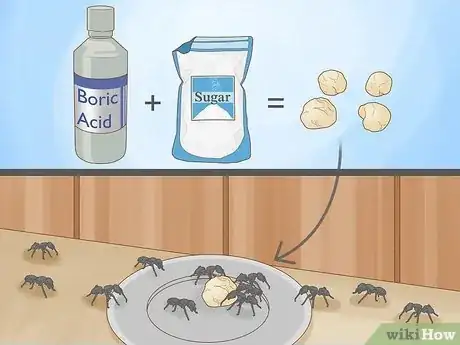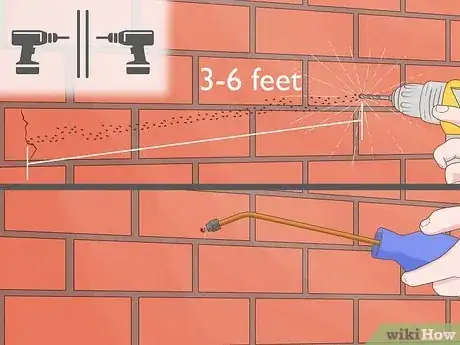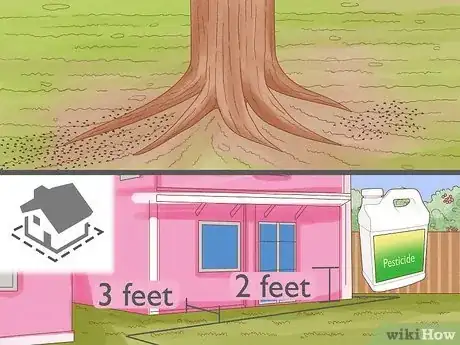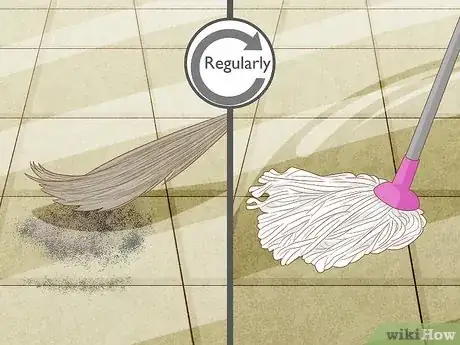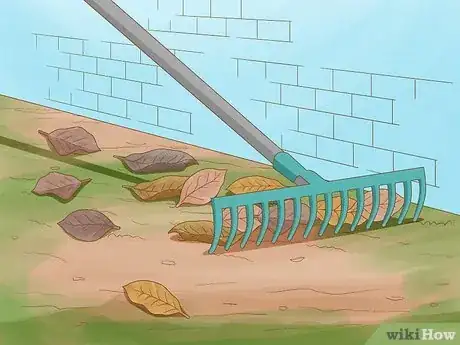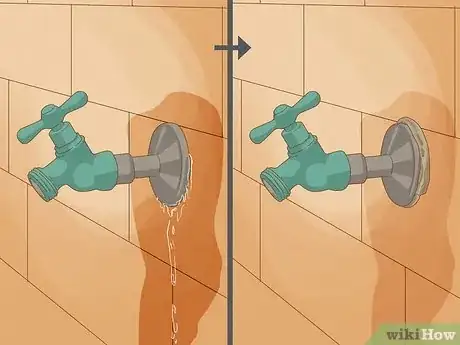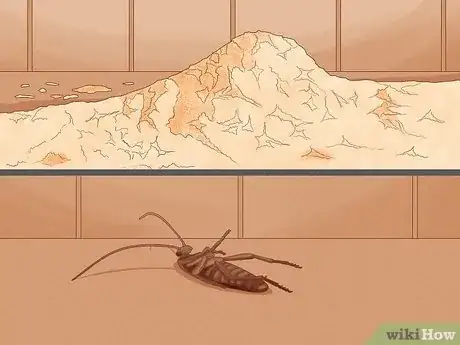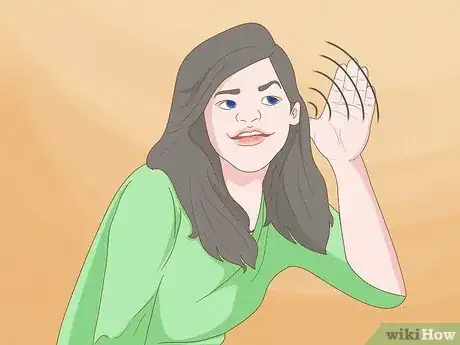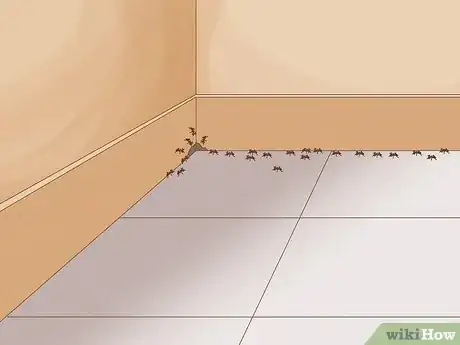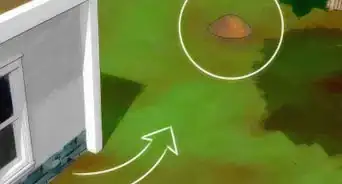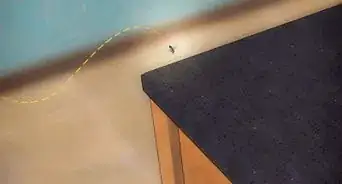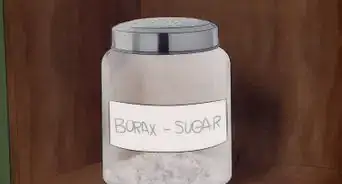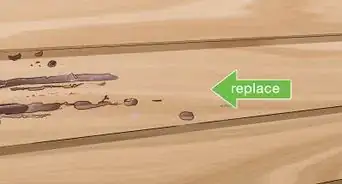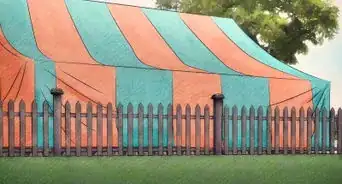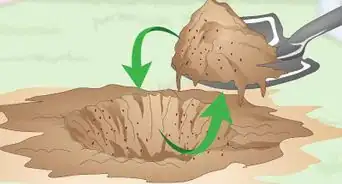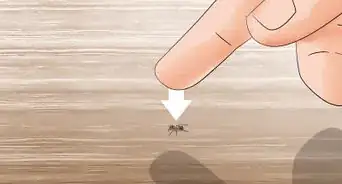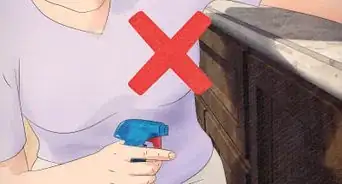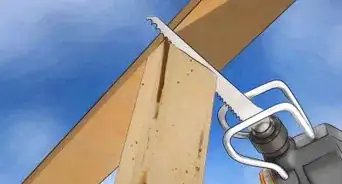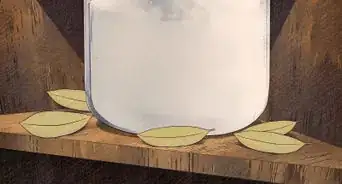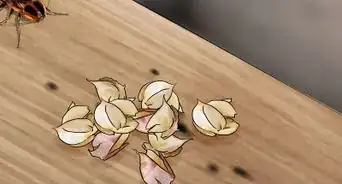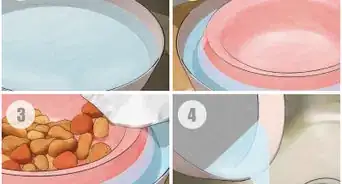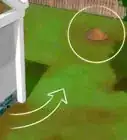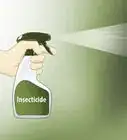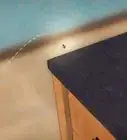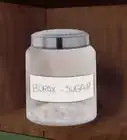This article was written by Scott McCombe and by wikiHow staff writer, Hunter Rising. Scott McCombe is the CEO of Summit Environmental Solutions (SES), a family-owned local pest solutions, animal control, and home insulation company based in Northern Virginia. Founded in 1991, SES has an A+ rating with the Better Business Bureau and has been awarded “Top Rated Professional,” and “Elite Service Award" by HomeAdvisor.
There are 11 references cited in this article, which can be found at the bottom of the page.
wikiHow marks an article as reader-approved once it receives enough positive feedback. This article has 25 testimonials from our readers, earning it our reader-approved status.
This article has been viewed 1,345,146 times.
Ick! Have you noticed a few big black ants crawling through your kitchen? Then you may be dealing with carpenter ants invading your home. These large ants come into your home looking for food, and make nests inside your walls. Even though these ants can cause damage to your home, it’s easy to take care of an infestation if you catch it early. Keep reading, and we’ll walk you through the most effective ways to get rid of those carpenter ants and stop them from coming back again.
This article is based on an interview with our pest control specialist, Scott McCombe. Check out the full interview here.
Things You Should Know
- Place bait traps near where you’ve seen ants. Make your bait with a mix of sugar and boric acid.
- Spray insecticidal dust or diatomaceous earth onto nests to get rid of carpenter ants in your walls.
- Clean your home frequently to remove the carpenter ants’ food sources.
- Prevent carpenter ants from getting in by sealing cracks and holes around your home with caulk, trimming plants near exterior walls, and fixing leaky areas inside.
Steps
Killing Carpenter Ants
-
1Place bait traps near ant trails. Choose a slow-acting bait so the ants bring it back to the rest of the colony in the nest. Set out the traps where you’ve seen ants the most frequently, such as your kitchen, bathroom, or attic. Replace the baits every few days until you don’t see any more carpenter ants in your home.[1]
- Avoid using an insecticidal spray that immediately kills carpenter ants since the rest of the colony won’t be affected by it and it can cause them to spread out to build more nests.
- Bait traps are your best bet if you can’t easily find where the ants are nesting or if you don’t want to use chemical insecticides.
- If you have kids or pets, place the traps where they’re unable to access them since they contain mild poisons.
-
2Make homemade baits with boric acid and sugar. Mix equal parts of granulated sugar and boric acid together to create a sweet bait that attracts carpenter ants. Put the bait in small dishes or bottle caps near the areas where you’ve seen the most ants and along any cracks where they get into your walls. Reapply the bait every few days until the ants go away.[2]
- The ants are attracted to the sugar, but the boric acid penetrates their bodies and kills them.
- Boric acid is low toxicity, so it’s safe to use around pets and children.
Advertisement -
3Apply insecticidal dust to nests inside your walls. Drill holes in your wall 3–6 feet (0.91–1.83 m) on either side of where you’ve seen ants entering. Use a bulb duster to blow the dust into the hole to coat the ants. As the ants walk through the dust, they’ll spread the pesticides throughout the nest to kill the rest of the colony.[3]
- For a non-toxic option, apply diatomaceous earth to kill carpenter ants instead.
- After you’re finished applying the dust, seal the holes with a dowel or small piece of cork and paint over it to hide your repairs.
-
4Spray a residual pesticidal barrier around your home’s perimeter. If you want to get rid of ants outside, treat areas where you’ve noticed ants, such as nearby trees and shrubs. Then, spray the pesticide around the base of your home to kill any carpenter ants that try to get inside.[4] Apply the spray 2 feet (61 cm) up onto your home and about 3 feet (91 cm) out from the wall.[5]
- Pesticidal sprays are toxic, so avoid letting pets or children in areas that you just treated.
Keeping Carpenter Ants Out
-
1Clean your home regularly. Ants need food and water sources to survive, so sweep your floors and wipe your counters to clean up the crumbs. Wipe up spills as soon as you make them so ants aren’t drawn to the spot.[6] Make sure you also remove any clutter around your home to get rid of potential shelters for the ants.[7]
- If you spill something sweet like juice or soda, rinse off the area with water or use another cleaner since ants are especially attracted to the sugar.
-
2Wipe ant trails with a vinegar solution. Mix a solution that’s equal parts white distilled vinegar and water. Dip a clean cloth in the solution and wipe the surfaces where you’ve seen a trail of ants walking through your home.[8]
- The vinegar’s strong odor will temporarily cover up the scent the ants follow so they can’t follow the trail.
-
3Seal up holes and cracks in your home with caulk. Look for cracks around your home’s foundation, as well as around doors and windows. Apply caulk to all the openings until they’re completely filled in. and cracks around doors, windows, and any other areas where ants could get into your home.[9]
- Install a screen door and window screens as an additional layer of protection from ants.
-
4Remove natural debris near your exterior walls. Cut tree limbs so they aren't hanging directly over your house. Clean up weeds, leaves, wood piles, and other debris that's close to your house since they could be harboring a colony of carpenter ants.[10]
- If you have firewood outside, keep it away from your home and only bring it inside right before you burn it.
-
5Fix leaks and water damage around your home. Search for leaks in your home since carpenter ants are drawn to damp wood. Repair any leaky faucets and pipes that you find so they don’t cause any more damage. If you find any wood that’s been completely water-damaged, replace it so it doesn’t attract ants.[11]
- Check your home’s exterior for leaks in your roof or clogged gutters that need repairs as well.
- Carpenter ants make their nests in damp wood since it’s easier for them to chew through.[12]
Identifying Ant Infestations
-
1Look for large black or reddish ants in your home. It’s easy to identify a carpenter ant since they’re one of the larger household species at up to 1⁄2 inch (1.3 cm) long.[13] They have 3 body segments, 6 legs, and 2 antennae with an elbow-shaped bend. While they’re usually black, carpenter ants may also look brown or dark red.[14]
- Most carpenter ants are wingless, but some worker ants may have 2 sets of wings. The front set of wings will appear longer than the back set.
- If the insects you see are brown or tan, have straight antennae, or have 2 sets of wings that are the same length, then you may have found termites. Get rid of termites right away since they can cause even more damage to your home.
-
2Inspect your home for piles of sawdust and dead insects. Look around the bases of your walls, in cabinets, and near countertops for piles of frass, which is the sawdust-like material left behind when ants bore into wood to make their nests.[15] If you see this around your house, it's a telltale sign there are ants in your home.[16]
-
3Check wood for smoothly bored holes. If you suspect carpenter ants outdoors, check stumps, logs, and firewood for long slits in the wood that have smooth sides. Check the ground nearby for frass scattered around as well. If you suspect ants indoors, look for holes bored into hollow doors, cabinets, beams, and structural wood.[17]
- Look for areas where the wood might get slightly damp, such as in your bathroom or underneath sinks, since ants like to build their nests in moist wood.
-
4Listen for faint rustling noises in your wall. Put your ear up to your wall where you think ants are nesting. If you hear a faint rustling sound like something is moving around inside your walls, then you’re probably dealing with a carpenter ant problem.[18]
- Check walls near windows and doors since they’re easy entry points for carpenter ants.
-
5Follow ant trails to find their nest. Since carpenter ants are active at night, check your home after it’s dark with a flashlight.[19] When you see a long trail of ants, try to find where they’re coming into your home since the nest or colony will be nearby. Keep watching until you're sure where the nest is located.[20]
- Most times, you'll probably see them crawl into a space in the wall, a cabinet, or a door.
Expert Q&A
-
QuestionWhat attracts carpenter ants in a home?
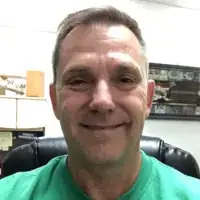 Scott McCombeScott McCombe is the CEO of Summit Environmental Solutions (SES), a family-owned local pest solutions, animal control, and home insulation company based in Northern Virginia. Founded in 1991, SES has an A+ rating with the Better Business Bureau and has been awarded “Top Rated Professional,” and “Elite Service Award" by HomeAdvisor.
Scott McCombeScott McCombe is the CEO of Summit Environmental Solutions (SES), a family-owned local pest solutions, animal control, and home insulation company based in Northern Virginia. Founded in 1991, SES has an A+ rating with the Better Business Bureau and has been awarded “Top Rated Professional,” and “Elite Service Award" by HomeAdvisor.
Pest Control Specialist Carpenter ants are drawn to high humidity and moisture, so you might find them near leaks or areas that are chronically wet.
Carpenter ants are drawn to high humidity and moisture, so you might find them near leaks or areas that are chronically wet. -
QuestionMy ants are outside, but I have several stray cats. Will they eat the bait? How do I keep them safe?
 Community AnswerBoric acid is harmful to pets. Put the mixture in a covered container with small holes so that only ants can get in.
Community AnswerBoric acid is harmful to pets. Put the mixture in a covered container with small holes so that only ants can get in. -
QuestionDoes paprika help get rid of ants?
 Community AnswerYes, as does pepper (black, red, chili or cayenne), garlic, cinnamon or cloves.
Community AnswerYes, as does pepper (black, red, chili or cayenne), garlic, cinnamon or cloves.
Warnings
- If you’re not able to get rid of the carpenter ants on your own, contact a professional exterminator to treat your home.⧼thumbs_response⧽
- Keep chemical pesticides away from pets and children since they are toxic.⧼thumbs_response⧽
- Carpenter ants don’t sting, but they may bite if you handle them.[21]⧼thumbs_response⧽
References
- ↑ https://edis.ifas.ufl.edu/publication/IN1075
- ↑ https://extension.sdstate.edu/watch-out-carpenter-ants
- ↑ https://ohioline.osu.edu/factsheet/HYG-2063
- ↑ https://extension.sdstate.edu/watch-out-carpenter-ants
- ↑ https://ohioline.osu.edu/factsheet/hyg-2064
- ↑ https://extension.umn.edu/insects-infest-homes/ants#controlling-ants-indoors-41812
- ↑ Scott McCombe. Pest Control Specialist. Expert Interview. 19 November 2019.
- ↑ https://extension.umn.edu/insects-infest-homes/ants#controlling-ants-indoors-41812
- ↑ https://ohioline.osu.edu/factsheet/HYG-2063
- ↑ https://extension.psu.edu/carpenter-ants
- ↑ https://extension.colostate.edu/topic-areas/insects/carpenter-ants-5-554/
- ↑ Scott McCombe. Pest Control Specialist. Expert Interview. 19 November 2019.
- ↑ Scott McCombe. Pest Control Specialist. Expert Interview. 19 November 2019.
- ↑ https://extension.colostate.edu/topic-areas/insects/carpenter-ants-5-554/
- ↑ Scott McCombe. Pest Control Specialist. Expert Interview. 19 November 2019.
- ↑ https://entnemdept.ufl.edu/creatures/urban/ants/fl_carpenter_ants.htm
- ↑ https://ohioline.osu.edu/factsheet/HYG-2063
- ↑ https://extension.umn.edu/insects-infest-homes/carpenter-ants#how-to-find-carpenter-ant-nests-104011
- ↑ Scott McCombe. Pest Control Specialist. Expert Interview. 19 November 2019.
- ↑ https://extension.psu.edu/carpenter-ants
- ↑ https://ohioline.osu.edu/factsheet/HYG-2063
About This Article
To get rid of carpenter ants, mix equal parts baking soda and powdered sugar in a shallow bowl and place it wherever you've seen the ants. The powdered sugar will attract the ants, and the baking soda will kill them. Spray any ants you encounter with soapy water to kill them and get rid of their scent trail. Try to find the ants’ nest by following them to where they take food back to. Or, check for damaged wood in and around your home, since carpenter ants chew through wood to make their nests. When you find the nest, spray it with a non-toxic insecticide, or pour boiling water into it if it’s located outdoors. For serious infestations, consider calling a pest-control agency. To prevent carpenter ants from coming back, mix equal parts water and vinegar in a spray bottle, and spray your baseboards, windowsills, and countertops with it. The smell of the vinegar will confuse and deter the ants. You should also keep your kitchen as clean as possible since carpenter ants are attracted to crumbs and food spills. Finally, make sure to seal entrances, like doors and windows, and cut back brushes or trees that carpenter ants could nest in. To learn how to tell the differences between carpenter ants and termites, keep reading.

